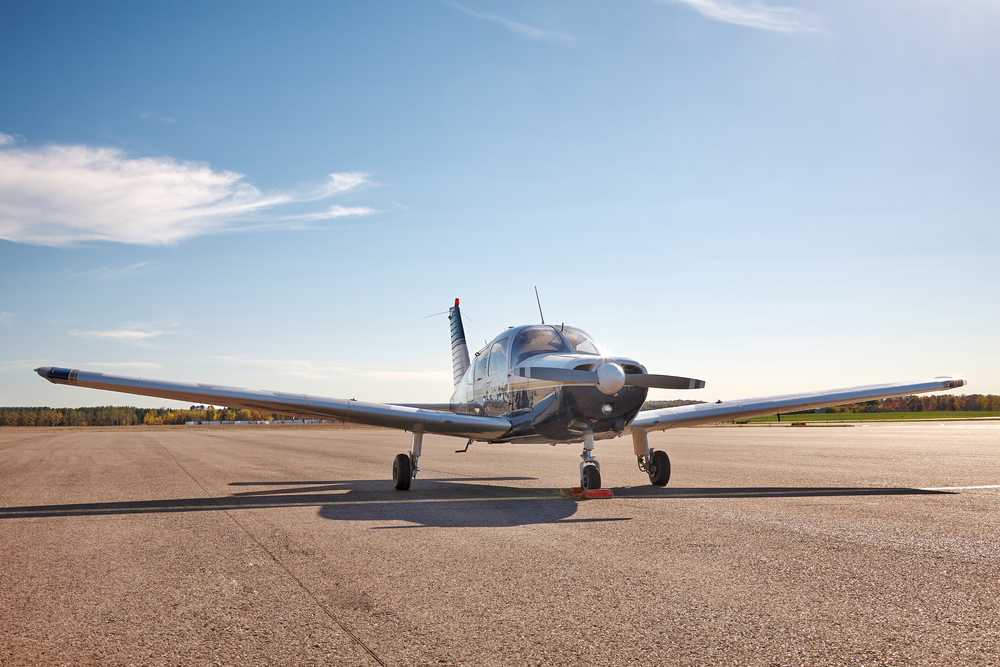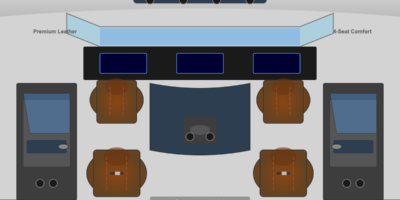The Daher TBM 940’s the fastest single-engine turboprop you can buy – 330 knots cruise while hauling six people in pressurized comfort. This French speed demon dominates the owner-flown turboprop market with insane performance, cutting-edge avionics, and single-pilot certification. Question is – does it justify that $4.7 million price tag?
Quick Answer: TBM 940 cruises at 330 knots (380 mph) at FL280-FL310 on a Pratt & Whitney PT6A-66D making 850 shp. Range exceeds 1,730 nautical miles with reserves. Pressurized cabin seats six with stand-up headroom. Garmin G3000 avionics with autothrottle and emergency descent mode come standard. Operating costs run $1,100-$1,400 per hour. New: $4.7 million. Used TBM 940s: $3.5-$4.2 million.
Performance Numbers
TBM 940 climbs to FL280 in just 20 minutes with typical loads. Service ceiling hits 31,000 feet where jet traffic thins out. Takeoff needs 2,460 feet, landing takes 2,380 – short enough for most GA airports. Max cruise hits 330 knots true airspeed. Economy cruise at 290 knots extends range and cuts fuel burn.
PT6A-66D turbine makes 850 shaft horsepower driving a five-blade Hartzell composite prop. Fuel capacity’s 284 gallons (1,900 pounds) giving you over 3 hours at high-speed cruise with reserves. Max takeoff weight’s 7,394 pounds with useful load around 1,850. Full fuel leaves 900-1,000 pounds for people and bags.
The Cabin
Cabin measures 13 feet long, 3.9 feet wide, 4.2 feet tall – stand-up headroom for most adults. Six seats in club seating. Pressurization system maintains 6,000-foot cabin altitude at FL310. Air conditioning and heat work on the ground and in flight. Big windows provide excellent vis.
Interior features executive-grade materials – leather seats, wood accents, premium carpeting. Soundproofing cuts cabin noise to conversation-friendly levels. Belted lav provides onboard facilities. Baggage compartment holds 110 pounds accessible in flight. External baggage area stores 240 pounds. Refined interior rivals light jets at a fraction of the cost.
G3000 Avionics
Integrated G3000 flight deck’s got three high-res displays. PFD shows flight instruments with synthetic vision overlaying terrain and obstacles. MFD handles nav, weather, traffic, engine monitoring. Touchscreen controller simplifies data entry and system management.
Autothrottle adjusts power automatically during climbs, descents, cruise. Emergency descent mode (EDM) activates if you become incapacitated – system descends to 14,000 feet automatically and levels off. Automatic icing detection activates anti-ice systems. Electronic stability and protection (ESP) prevents unusual attitudes. Digital engine control automatically manages prop, fuel, ignition. These automation features cut pilot workload dramatically.
Single-Pilot Ops
TBM 940’s certificated for single-pilot IFR. Automation and integrated systems make single-pilot flying manageable despite the performance. Many owners fly without copilots, relying on autothrottle, autopilot, electronic systems. But insurance companies often require turbine transition training and recurrent sim sessions.
Pilot requirements vary by insurance but typically include instrument rating, 1,000+ total hours, 100+ hours retractable, initial turbine training. Type rating’s not required for TBM series. Most pilots complete 10-15 days of initial training covering systems, performance, emergencies. Recurrent training’s annual – ground school and sim sessions.
What It Costs to Operate
Fuel burn at high-speed cruise runs about 65 GPH. At $6 per gallon Jet-A, fuel’s $390 per hour. Typical cruise settings use 55-60 GPH, cutting fuel to $330-$360 per hour. PT6 engine hits 4,000-hour TBO with hot section at 2,000 hours. Engine reserves cost roughly $250-$300 per hour.
Annuals run $25K-$35K depending on squawks and condition. Insurance costs $20K-$35K yearly depending on pilot experience and hull value. Hangar varies by location: $500-$2,000 monthly. Total operating costs including all reserves average $1,100-$1,400 per hour. Flying 200-300 hours annually? Budget $250K-$400K in annual operating expenses plus acquisition costs.
Compared to Alternatives
Pilatus PC-12 offers more cabin space and cargo but cruises 45 knots slower. Piper M600 (another single-engine turboprop) cruises at 274 knots – 56 knots slower than the TBM 940 – but costs $1 million less. Entry-level jets like Cirrus Vision Jet match TBM’s speed but burn way more fuel and cost more to maintain.
TBM 940 fills a unique niche: jet-like speed with turboprop operating costs. Single engine simplifies ops compared to twins. Pressurization and speed let you fly above most weather. For missions needing 300-600 mile legs with 4-6 people, TBM 940 delivers unmatched efficiency. Longer missions favor jets. Shorter trips work fine in slower, cheaper planes.
Market and Resale
New TBM 940s cost about $4.7 million fully equipped. Used examples (2019-2022 models) sell for $3.5-$4.2 million depending on hours and equipment. TBM series holds value exceptionally well – 10-year-old TBM 900s still command 60-70% of original price. Strong demand from owner-pilots and charter operators supports resale values.
Daher produces 30-40 TBMs annually, limiting supply. Controlled production maintains exclusivity and supports values. Financing’s available through specialized lenders at reasonable rates due to strong residuals. Most buyers configure aircraft during build, adding $200K-$400K in options. Popular upgrades include enhanced avionics, premium interior materials, paint schemes.
Is It Right for You?
TBM 940 suits pilots flying 150+ hours annually across 300-800 mile routes. Business owners, entrepreneurs, professionals value the time savings over airlines. Plane accesses 5,000+ airports compared to jets’ 500-1,000 suitable fields. Door-to-door travel times often beat airlines on routes under 600 miles.
Ownership requires serious financial resources beyond purchase price. Annual operating costs exceed $250K for typical usage. Pilots must commit to ongoing training and proficiency. Performance demands respect – approach speeds are 120+ knots requiring precise control. But for pilots who can afford it and fly frequently, TBM 940 delivers remarkable capability. The combo of speed, comfort, and efficiency explains why TBM series dominates the owner-flown turboprop market worldwide.
Join the Aircraft Insider Community
Get exclusive backcountry flying tips, aircraft reviews, and Western aviation destinations delivered to your inbox.
✈️ No spam, ever. Unsubscribe anytime. Privacy respected.



Leave a Reply